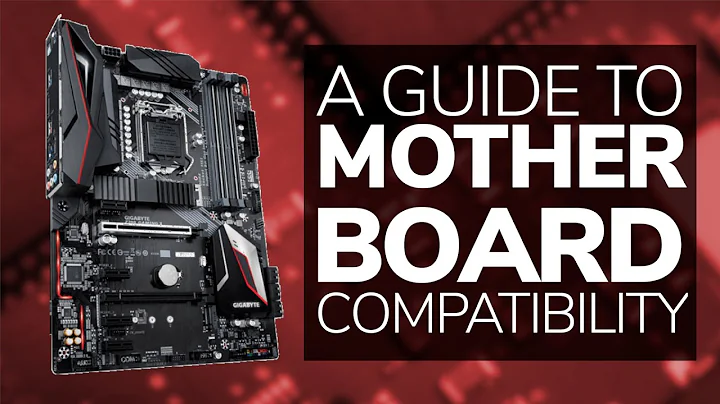Finding out SSD compatibility with motherboard
Solution 1
Your laptop has esata, you can get an external device with esata temporarily plug the SSD or hdd in there and clone at full speed. Also go into your BIOS and check if the SATA controller is in AHCI mode.
You can boot from a Windows DVD and install windows. You can also use a 4gb USB stick and after using the microsoft provided ISO to USB tool boot from the memory stick and install windows.
The USB method has the added benefit that you can copy the newest drivers on to the USB memory stick so windows can find them.
Solution 2
Verify that you have AHCI compliant SATA ports and that AHCI is enabled. The drive management software by Micron and Samsung, for example, will refuse to recognize their own drives if they are on a non-AHCI SATA port.
Enabling AHCI mode is not always an option, as not all SATA ports are AHCI compliant. SATA-I and some SATA-II motherboards offer SATA without AHCI. You can expect that any SSD that requires AHCI mode to function will not work on them.
You will find many cases where BIOS will recognize the drives but the OS may not because of AHCI-mode-only software restrictions. Without AHCI enabled neithe the Micron nor the Samsung drive management software will even recognize their own drives as being in the system. There are also some rather arcane restrictions, such as Micron not supporting nvidia chipsets. Read the documentation before you buy.
Related videos on Youtube
Tanaka Saito
Updated on September 18, 2022Comments
-
Tanaka Saito over 1 year
I have an issue with adding a new SSD drive to my MSI GT683. I have recently received a SanDisk Ultra Plus SDSSDHP 256 GB (2.5" SATA 6 GB/s, which I assume is SATA III) and I want to replace my old HDD by installing the OS on the new SSD. The internal specs for the MSI looks like this (page 3-41) where number 3 is the hard drive and number 5 says "optical drive device". At the same location as number 5 there is another slot for a HDD/SSD drive which is where I put the new SSD. This is where the problems start.
I can find the newly inserted SSD in the BIOS but Windows does not recognise that there is a new hard drive device in the laptop. When I started up the laptop it recognised that there was a drive in the laptop, installed drivers and required a restart. After the restart Windows no longer recognises that there is an SSD drive in the laptop. I have downloaded the SSD Toolkit which says the Firmware is up to date.
I have tried switching the positions for the HDD and SSD, but nothing changes (only the boot time for the BIOS to recognise the HDD is in another position), it still boots to Windows. I have restored the HDD to manufacturer settings but it still doesn't recognise the SSD.
I have read that it is recommended to clone Windows from my HDD to the SSD with a USB-to-SSD cable, but is this really the only way? Is there a way to get Windows to recognise there is a new SSD in the laptop without cloning from a HDD? As in, could I possibly boot to the SSD, format it and install Windows from a separate drive onto the SSD?
-
 Ƭᴇcʜιᴇ007 over 10 yearsAfter you installed it and Windows made you reboot once. Did you then go into Windows' Disk Management to partition and format the drive? Does it appear in Disk Management at all?
Ƭᴇcʜιᴇ007 over 10 yearsAfter you installed it and Windows made you reboot once. Did you then go into Windows' Disk Management to partition and format the drive? Does it appear in Disk Management at all? -
Tanaka Saito over 10 yearsThe problem is that I can't locate the disk in Disk Management :S
-
-
Tanaka Saito over 10 yearsThe SATA controller is set to AHCI. I'm currently downloading a disk cloning software so I will try to use the temporary connect SSD to HDD and do a full clone, will get back to you when I have tried this solution.
-
Tanaka Saito over 10 yearsWell, it now recognises the disk, but the issue now is that the memory is corrupt and will not allow an installation on any other drive than the original one. Trying to attach that to a separate computer and installing windows on it will not work. But you solved my original issue, thank you :)
-
cybernard over 10 yearsWhat is the exact error as "memory is corrupt" taken out of context could mean a dozen things? If you real have bad RAM only replacing it will fix it. However, that might not be the case.
-
Tanaka Saito over 10 yearsIt was me who didn't understand the error :) Apparently I was running Windows from the safety recovery part of the drive which didn't allow any installation of new software (understandably). This disk also was formatted as MBR and it said that it required it to be GPT, which I now changed to. This, in turn, made the disk completely useless so I will try to just disconnect it and do a clean install on the SSD and pray that the computer will recognise it :)




